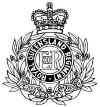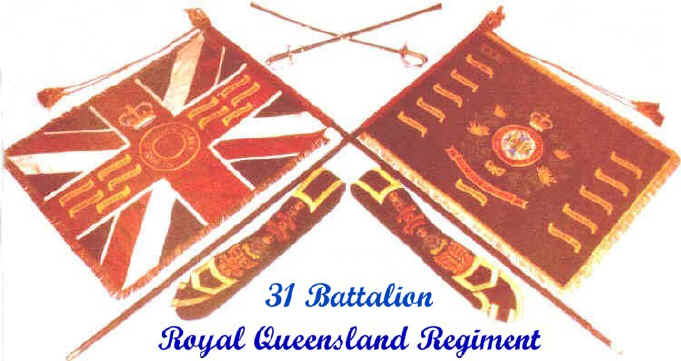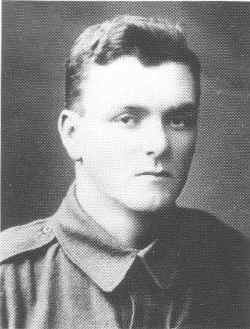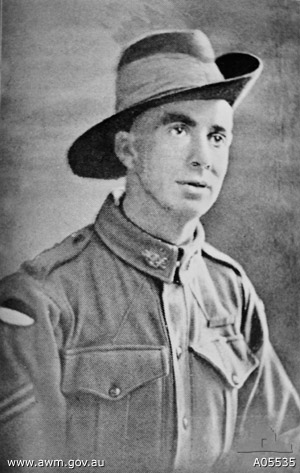 |
|
|
|
|
The Queens & Regimental Colours |
|
|
LINEAGE.
|
|
HISTORY (by S. W. Doyle) The 31st Battalion has existed in one form or another for over 100 years. The earliest history of the regiment can be traced back to 1881 when volunteer Independent Rifle Companies were formed at Charters Towers, Townsville and Ravenswood. On 30th October 1886 a proclamation was published providing for the establishment of certain Queensland based military forces. The 3rd Queensland Regiment was formed in the Northern Military District. The territorial titles of the regiments were derived from the early explorers of the region, Edmund Kennedy was a fitting namesake for the 3rd Queensland Regiment due to his exploits throughout the north and Cape York. The first headquarters was established in Townsville with two rifle companies in support. Rifle companies were also formed at Charters Towers and Ravenswood. Another company was later formed in Mackay. In 1899 there was a reorganisation within the battalion area, with the headquarters and three rifle companies formed at Charters Towers and a company each at Townsville, Ravenswood and Cairns. As the Kennedy Regiment grew it became necessary to divide it into two Battalions. This occurred in 1890. The first comprised Charters Towers and Ravenswood, the second Townsville, Cairns and Mackay. Also in 1899, a military force of volunteers was raised for service with Her Majesty's Army in South Africa. Many members of the 3rd Queensland Regiment joined the first and second contingents of the Queensland Mounted Infantry during the Boer War, 1899-1902. In appreciation of the service by members of the unit in the Boer War, the unit was presented with the King's Banner. In 1903 after further reorganisation the unit was formed as the Kennedy Regiment, 1st Battalion. It remained as such until the introduction of universal military training in 1912. The designation was then changed to 2nd Infantry, Kennedy Regiment. At the outbreak of WW1 in 1914 the Kennedy Regiment was dispatched from Townsville to Thursday Island for coastal defence.
The 31st Battalion AIF was part of the 8th Brigade, 5th Australian Division formed in 1915. The unit was initially deployed for defence of the Suez Canal region, after which it sailed for France as part of the 5th Australian Division. Their first taste of action was in France during the battle of Fromelles, where the Division suffered heavy losses. In late 1916, the Division joined other Australian Divisions on the Somme, and in early 1917, took part in the advance to the Hindenberg Line. For the remainder of 1917 the Battalion was involved in heavy fighting in the Ypres sector. In August 1918 the Battalion participated in the capture of Villers Bretonneux and later, Bullecourt. The 31st Battalion as part of the 5th Division was later dispatched south to Amiens to confront a full scale German offensive. After the war the Battalion area and its disposition continually changed and by 1939 many sub-units ceased to exist. At the outbreak of WW2 in 1939 many of the members enlisted into the newly formed 2nd AIF, while those who remained with the Battalion carried out training camps on a part-time basis. In September 1942, the Battalion moved into Cape York taking up defence duties at the vital Jacky Jacky airstrip. Subsequently, the Battalion returned to Cairns where it amalgamated with the 51st Battalion in April 1943 to form the 31st/51st Battalion 2nd AIF. In 1943 this newly formed Battalion served on defence and patrol duties at Merauke in Dutch New Guinea. In 1944/45 the unit rendered great service in many bitter engagements on Bougainville, including the battles of Tsimba Ridge and Porton Plantation. Leaving Bougainville, the Battalion accepted the Japanese surrender on Ocean and Nauru Islands and formed part of the occupation forces and Nauru and Rabaul.
Following the entry of Japan into the war the 2nd/31st Battalion was recalled to Australia to fight in the Owen Stanley campaign over the Kokoda Trail, taking part in fierce battles at Gorari and Gona. In September 1943 the Battalion, after a short respite, returned to New Guinea to fight in the Markham Valley campaign and on to Lae. In July 1945 the 31st Battalion landed at Balikpapan in Borneo where fighting was intense. On 17 September 1945, Lieutenant Colonel E. M. Robson, DSO, Commanding Officer 2nd/31st Battalion, received the official surrender from Major General Uno, Imperial Japanese Army, at Bandjermasin, Borneo. In the post war period the unit went through numerous restructures and organisational changes. In 1965, the unit was reformed within its present area as the 31st Battalion, The Royal Queensland Regiment. In 1976, the strength of the unit declined and it was reorganised as an independent rifle company. It subsequently regained its battalion status on 30th October 1986. At present the Headquarters 31st Battalion and the headquarters of Kennedy Company and Combat Service support company are located at Jezzine Barracks, Townsville along with one platoon, mortar and signals platoon. The Battalion also has platoons located at Cairns, Ingham, Charters Towers, Ayr and Bowen. All of these towns have had a long association with the Battalion |





